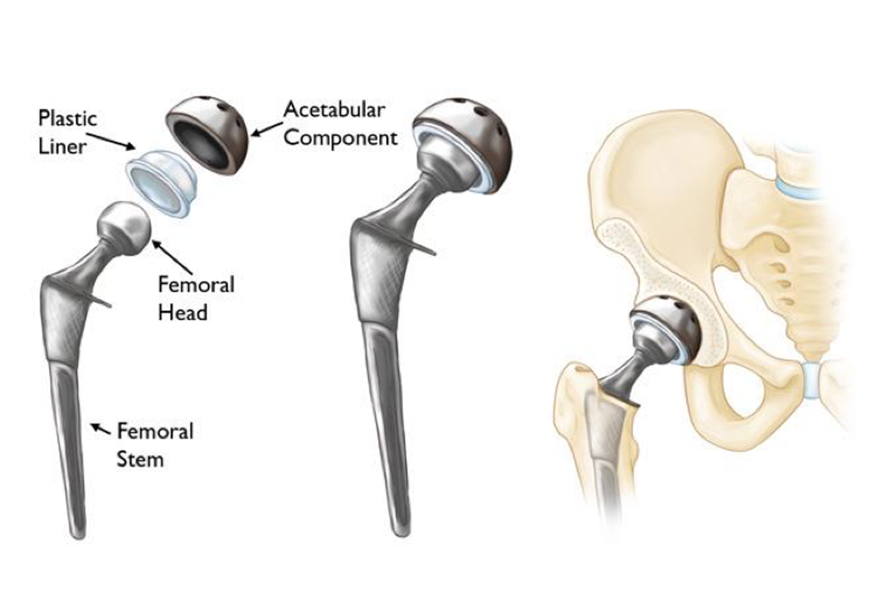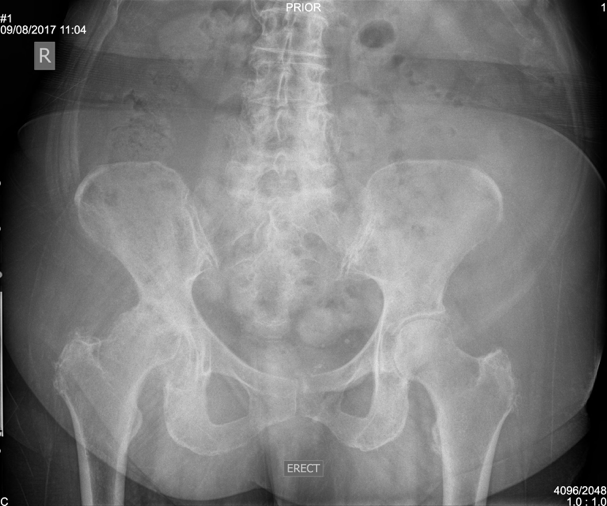Click on the links below to find out more about
Direct Anterior/Bikini Total Hip Replacement Surgery
Click on the links below to find out more about
Direct Anterior/Bikini Total Hip Replacement Surgery
OVERVIEW
Periacetabular osteotomy (PAO) surgery is used to correct hip dysplasia. If you have hip dysplasia, you may already be familiar with the pain around the groin area, as well as suffering from limping and a reduced range of motion. The pain from hip dysplasia can increase over time, so treatment of hip dysplasia is needed as soon as you become aware of it so you can save yourself from years of agony.
When you have a serious condition like this in your hip, PAO surgery has the potential to change your life. READ MORE
Hip dysplasia is a condition of the socket part of your hip joint. People may be born with hip dysplasia, but the symptoms often only appear in teens and adults. The condition means the socket (acetabulum) doesn’t fit the ball at the top of the femur bone (ball) well, resulting in pain, limping, and low mobility. Hip PAO surgery means reshaping the acetabulum to better accommodate the femur. When these 2 parts of the hip joint are perfectly matched, movement becomes easier, and the pain is no longer a defining feature of your day.
During surgery, your acetabulum is angled to match the femur head, correcting the misalignment. This is done by making small incisions on the bone to allow for repositioning. To ensure the joint doesn’t revert back to its previous position, screws are inserted for stability.
After surgery, your bone will continue to grow, further reinforcing the new ‘correct’ alignment of the acetabulum. Once healed, the ball-in-socket joint will have a greater range of motion and pain is significantly reduced or eradicated altogether.
If there is more than one condition causing your pain and discomfort, it may be possible to also complete a femoral osteotomy (to correct a misaligned femur head) or a hip arthroscopy (if you have a damaged labrum). Completing these surgeries together means you have only one recovery period, and you can experience a full range of motion much faster.
Patients with mild dysplasia may be referred, in the first instance, for physical therapy and possibly steroid injections. If the symptoms show no sign of change or changes for the worst, then a patient will likely be referred for PAO surgery.
Those who have a severe form of hip dysplasia, and who have experienced symptoms for a long time, might be referred straight for pao surgery. This will depend on other conditions, as well as the extent of hip damage, age and lifestyle. For example, those over 40 who have arthritic hips are more likely to benefit from being referred directly for hip total replacment surgery.
Dr David Slattery is a top-trained hip surgeon who has worked with experts in the field of hip surgery. He has gained fellowships from the Royal Australian College of Surgeons and the Australian Orthopaedic Association. He has specialist knowledge and experience – and has even operated on athletes and sportspeople at the top of their games.
Leave your hip surgery in the very capable and skilled hands of Dr David Slattery, a renowned surgeon with a wealth of education and practical experience.
To book a consultation, you can use the online booking form – or, if you prefer, you can call one of Dr Slattery’s Melbourne consulting rooms. READ LESS
There are normally four components to a total hip replacement:
A standard hip replacement in Australia refers to a hip replacement performed using an incision over the side of the hip with access to the hip joint from the back (posterior). It involves splitting various muscles to gain access to the hip joint. It offers excellent exposure of the hip, and is routinely done across Australia. Variations of this “standard” approach practiced by Australian surgeons are the Direct Superior Approach (DSA), and SuperPATH® hip replacement techniques, which still cut varying amounts of muscle tissue.


An anterior hip replacement is a hip replacement from the front of the hip, which involves an incision in the groin as opposed to the side. This approach for hip replacement was originally described in Europe, and has gained popularity in the United States. More recently it has gained popularity in Australia.
Dr Slattery uses either a cosmetic, or bikini, incision in the groin crease or an oblique incision which results in a small scar in the groin approximately 8-10cm long in most cases. The operation goes between muscles rather than cutting through them, which reduces the amount of trauma to the soft tissues and preserves the normal anatomy. The goals of anterior hip replacement are:
FAQs for hip replacement surgery
Should I have a hip replacement?
There are many things to consider when making a decision to undergo hip replacement surgery. It could ultimately give you relief from chronic pain and suffering, but there could also be an alternative. It is always best to be armed with plenty of questions ahead of your initial consultation with your hip replacement specialist.
What is the recovery time on an anterior hip replacement surgery?
Most patients are sitting out of bed or standing on the first day after surgery. Some patients are able to walk and can be safely discharged home in 36-72hrs. Usually patients will resume most normal activities within 3 – 6 weeks of their total hip replacement surgery. Once activity is possible with minimal pain, physical therapy and light exercise will be important to incorporate as a way to help recovery.
What are the complications with anterior hip replacement surgery?
This type of surgery is considered safe and is highly effective for patients who require it. With any surgery there can be complications and for hip surgery you may encounter the following:
Many steps are taken at each step of your operation to prevent complications occurring, and overall hip replacement is very safe and effective.
What can I expect after hip replacement surgery?
You will spend 2-3 days in hospital afterwards and be advised on how best to take care during the recovery period. Within the first few days you will be encouraged to walk with assistance from physiotherapy and nursing supports. Most patients do not need to go to inpatient rehabilitation post op unless they have significant medical co-morbidities or no supports at home.
Following surgery you will be required to avoid driving for approximately 2 weeks, possibly longer, depending on how quickly you regain confidence and coordination.
Ongoing pain from a hip replacement can be expected in the first few weeks. This should subside as your recovery time and postoperative physical therapy is undertaken.
What activities should I avoid after hip replacement surgery?
Patients should avoid driving for 2 weeks after hip replacement surgery (at a minimum). There are no other restrictions upon your activities after an anterior hip replacement.
Is hip replacement surgery safe?
Hip replacement surgery has a long proven safety record over many decades. With constant refinement techniques have become better to prevent short and long term problems. Advances in technique and materials have ensured that surgeries performed today are safer and deliver longer-lasting benefits to a greater number of patients than ever before. Dr Slattery prioritises the safety of his patients at every step of their journey to health, ensuring that the risk of complications such as blood clots and nerve damage are minimised.
How long will my new joint last after hip replacement surgery?
New, stronger artificial joints and improvements in implant delivery and placement mean that more than 85% of all hip joint implants will last 20 years without revision.


Dr Slattery is a hip replacement specialist located in Melbourne and has learnt the intricacies of Direct Anterior Total Hip Replacement surgery in both Switzerland and Australia from world leaders in this technique. Additionally, he provides hip replacement keyhole surgery (arthroscopy) where suitable for patients. He now has a number of total hip replacement consulting rooms across Melbourne.
Patient selection is extremely important in ensuring that you get the best outcome from your hip replacement surgery. Dr Slattery will assess you individually and discuss the best option for you during your consultation.
To book a consultation with Dr Slattery, a hip replacement specialist in Melbourne, please contact one of his rooms listed here, or by using our online contact form.

Dr David Slattery is an orthopaedic surgeon based in Melbourne with over 10 years of experience, with a special focus on hip and knee joint preservation and replacement. With qualifications in both medicine and law, he brings a unique and comprehensive approach to patient care. His surgical techniques are minimally invasive and evidence-based, designed to reduce pain and enhance recovery.
Trained in leading institutions across Europe and the USA, Dr Slattery offers advanced treatments for a wide range of joint conditions. He is deeply committed to patient outcomes and takes pride in tailoring treatment plans to each individual. Whether you’re an athlete or seeking relief from chronic joint pain, his goal is to restore function and improve your quality of life.